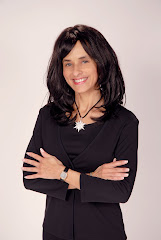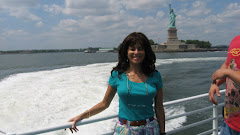




Parade of Nations
2,500 athletes from a record 82 countries are participating in the games, vying for medals in 86 events — including the newly added ski-cross competition. First-time Winter Olympic participants include the Cayman Islands, Columbia, Ghana, Montenegro, Pakistan, Peru and Serbia.
Here are some of my observations:
These events are limiting because some nations don’t have winter climate or winter sports terrains. In fact, several of the participating athletes where raised in the US or came here for college and returned to represent their mother countries.
Several countries entered only ONE athlete including: Cayman Islands, Bermuda, Andorra, Ethiopia, Algeria, Hong Kong, Pakistan, and Ghana
I always marvel at how Brazil, which is more than half Black, typically features all-white athletes in prestigious world events.
Speaking of race, there is a noticeable lack of “color” in the competitions.
No South American country has ever won.
Iran entered its first woman athlete and she carried the national flag in the parade.
The Jamaican bobsled team did not make the cut this time.
38/82 competing nations this year have never won a medal at the Winter Olympics.
A 51-year old (Mexican of European aristocratic descent) is the oldest competitor.
Canada never won a gold medal when they hosted the Olympics.
It was conducted in French followed by English. Many believe that is because Canada is bilingual. That is NOT why. The official languages of the Olympics are French and English - French is primary as the headquarters of the IOC are in Switzerland. Thus when announcements are made at the Games, they are made in French, English, and the language of the host country (if it differs).
The Show
After Beijing’s magnificent Opening Show at the 2008 Olympics, I thought no country could measure up.
I was pleasantly surprised with the visual artistry
Canada’s show was a feast for the eyes! It was visually breathtaking and combined live dancers, spectacular electronic images, and lighting & technological prowess (except for that last caldron lighting glitch) with a varied cultural and entertaining experiences.
Highlights were killer whales swimming through the stadium, fiddlers and river/tap dancers, spoken word poet, the boy floating over the amber waves of grain, audience participating in lighting up the stadium when it was in darkness, the skiiers, snowboarders and ice skaters descending the Canadian Rockies, and totem poles that morphed into trees.
The cultural segment of ceremony featured many of Canada's best-known musical stars — including Bryan Adams, Nelly Furtado, Sarah McLachlan and k.d. lang.
It also highlighted performers and traditions from Canada's aboriginal communities. And the highest-ranking official delegation at the ceremony — amid dignitaries from around the world — included the four chiefs of the First Nations whose traditional native territory overlaps the Olympic region. Importantly, the members of these groups remained on the floor, dancing for more than ONE hour, during the Parade of Nations!
They aknowledged that the First Nation was and is the real Canadaian
Several well-known Canadians received the honor of carrying the Olympic flag at a high-profile moment near the end of the ceremony. Among them were hockey Hall of Famer Bobby Orr, singer Anne Murray, race car driver Jacques Villeneuve and Betty Fox, mother of national hero Terry Fox.
The death of Nodar Kumaritashvili, 21-yr old luger, hung over the usually festive first day of the games. Inside BC Place Stadium, the ceremony was punctuated by somber pauses, sorrowful speeches and flags lowered to half-staff. The 21-year-old slider's grief-stricken teammates marched with black armbands and scarves. (With hours to go before the opening ceremony, a luger from the nation of Georgia was killed after he lost control of his sled on the infamously fast track at Whistler and crashed into a steel pole.)
The flame reached the stadium after a 106-day torch relay across Canada, passing through more than 1,000 communities in every province and territory.
This was the first time the Olympics are being broadcast simultaneously in 22 languages, including aboriginal languages (Canadian and American).
The overall favorites include Germany and the United States — which finished first and second four years ago in Turin — and also Canada, a best-ever third in 2006.
Here is a link to the article most posted on Twitter: http://www.boston.com/bigpicture/2010/02/opening_ceremonies_for_vancouv.html













.jpg)
.jpg)



